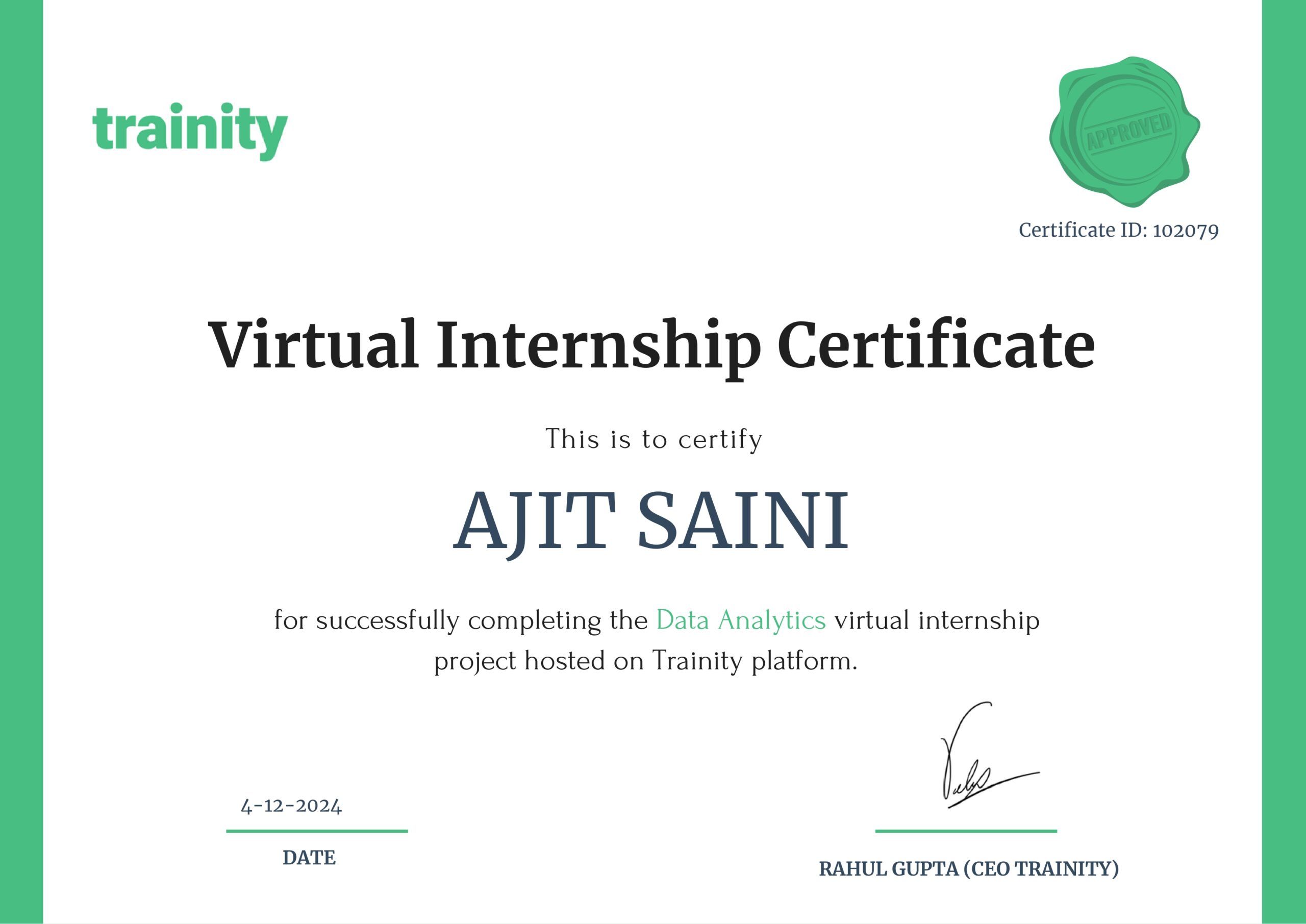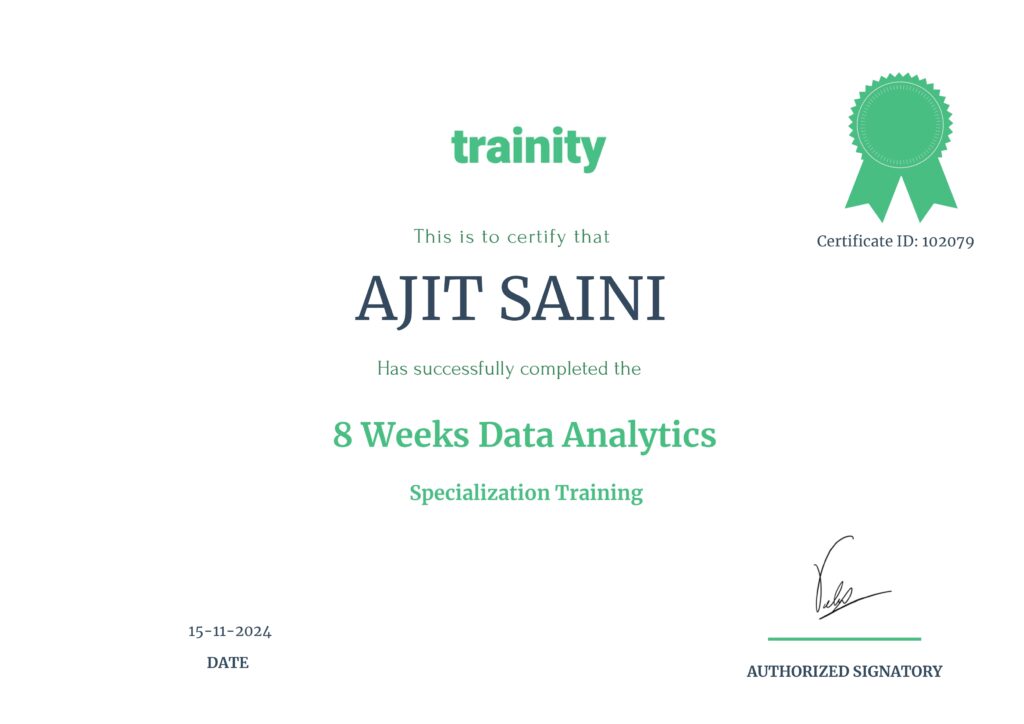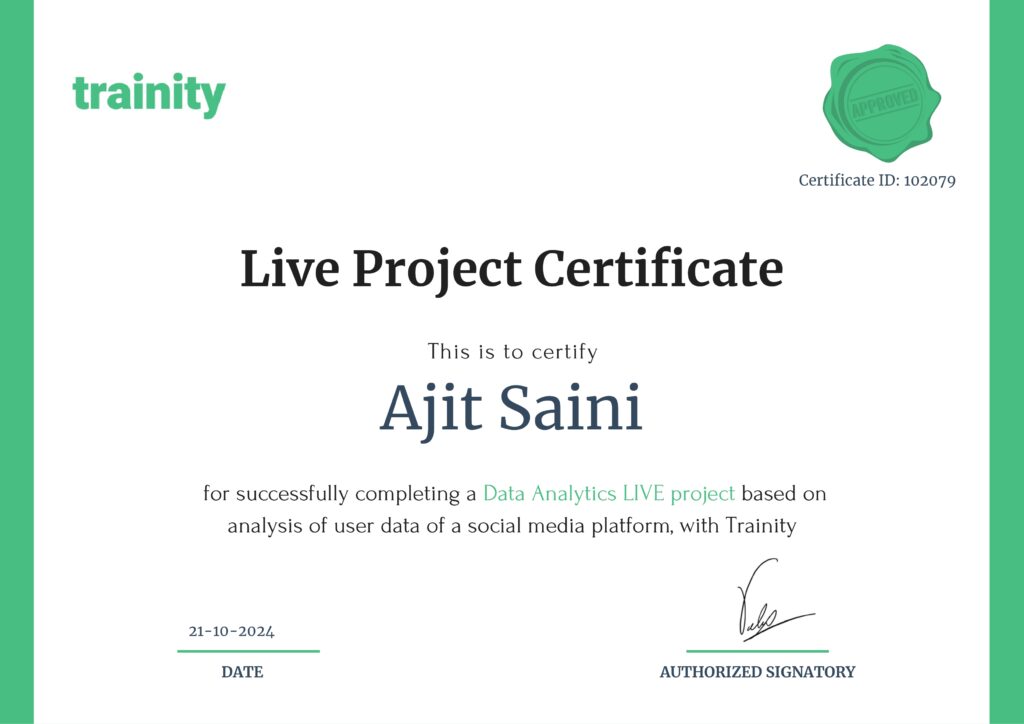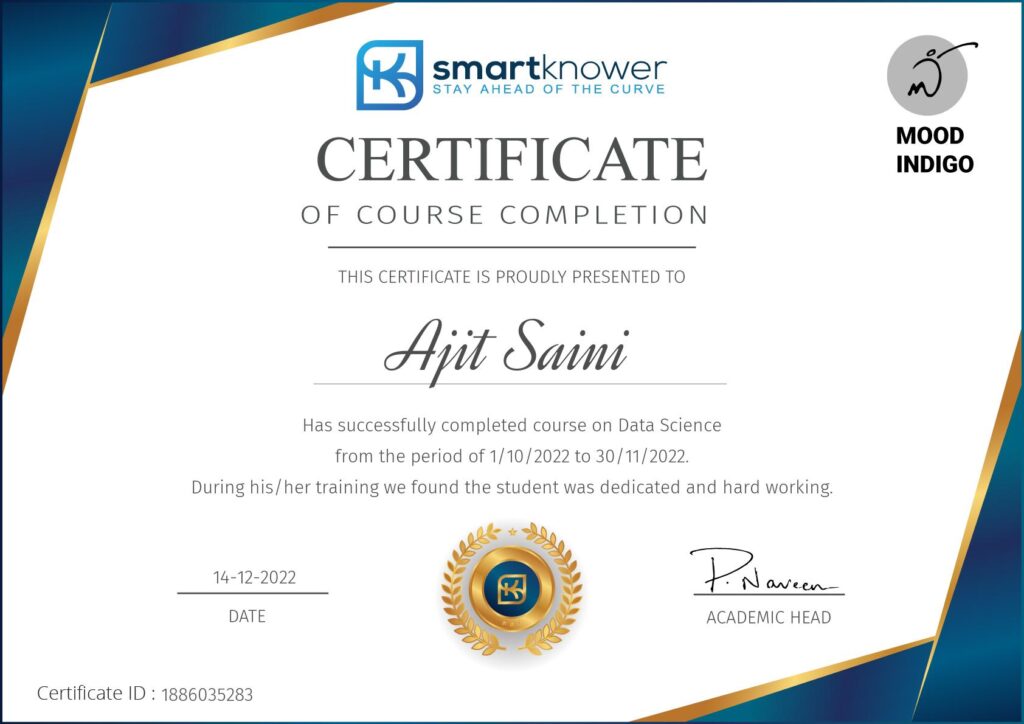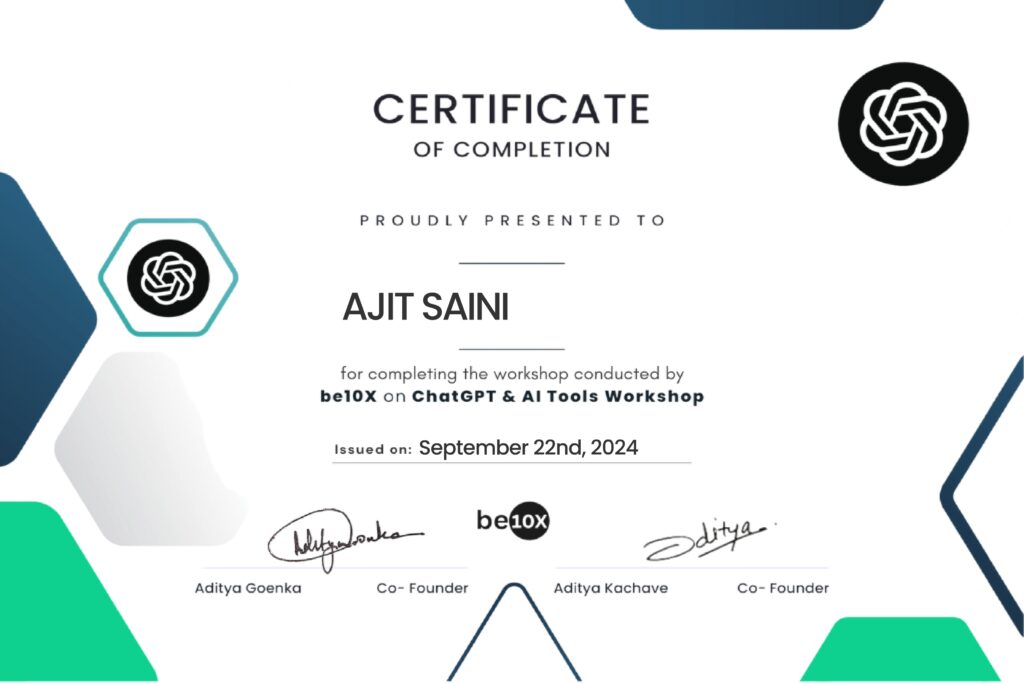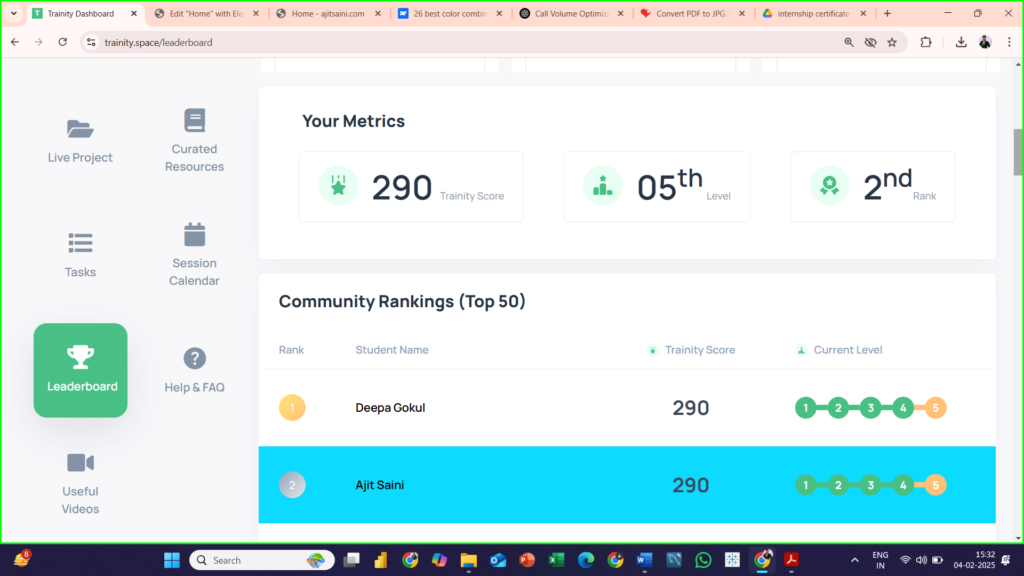Ajit saini
Advanced Excel Analyst
Data Analytics & AI Tools Expert
Automation & Strategy Specialist

HELLO EVERYONE
I’m Ajit, an aspiring Data Analyst passionate about turning raw data into meaningful insights that drive business decisions. My tagline, "Where Data Meets Strategy," reflects my belief in the power of data to guide smart, strategic choices.
I have completed multiple hands-on projects, applying data cleaning, statistical analysis, data visualization, and predictive modeling to solve real-world business problems. I am eager to leverage these skills in a professional role where I can contribute to data-driven decision-making.
Skills & Tools:
Programming & Data Analysis: Python (Pandas, NumPy, Matplotlib)
Databases & Querying: SQL (MySQL)
Data Visualization: Excel, Tableau
Other Tools: MySQL Workbench, Excel (Pivot Tables, VLOOKUP)
Business & Operational Analytics: Customer segmentation, loan default analysis, operational efficiency, and car feature demand analysis
I am actively seeking a Data Analyst role where I can apply my skills to solve complex business problems, gain industry experience, and grow as a data professional.
If you're hiring or open to collaboration, feel free to connect with me via email at :
My project

Analyzing the Impact of Car Features on Price and Profitability
The Car Feature Analysis project leverages regression analysis to optimize car pricing and improve demand forecasting. By analyzing key car features, such as engine size, fuel efficiency, safety ratings, and design elements, the project identifies which factors most influence consumer demand across various market segments. This data-driven approach helps manufacturers create pricing strategies that align with customer preferences, market trends, and profitability goals.
Using regression techniques, the project successfully optimizes car pricing by up to 30%, allowing manufacturers to set competitive prices while maximizing revenue. By integrating market segment data, the pricing strategy becomes more dynamic, adjusting according to customer demand in different regions and for specific features. This method not only enhances demand forecasting but also ensures that car prices are tailored to meet both consumer expectations and profitability targets, improving the manufacturer's position in a competitive market.

Bank Loan Case Study project
The Bank Loan Case Study project focuses on analyzing loan application data to uncover the key factors that influence loan defaults. By segmenting the dataset based on payment difficulties and various financial scenarios, the project identifies the top 10 factors contributing to loan default risk, such as income levels, credit score, debt-to-income ratio, loan amount, and payment history.
Using advanced Excel functions, the project extracts key correlations and insights, revealing patterns that impact loan repayment behavior. This analysis helps improve the loan approval process by enabling more informed decisions, reducing the risk of defaults, and minimizing financial losses. Ultimately, the project enhances the bank's ability to assess loan applications accurately, allowing for better risk management and more personalized loan offers tailored to each customer's financial situation..
The Bank Loan Case Study project focuses on analyzing loan application data to uncover the key factors that influence loan defaults. By segmenting the dataset based on payment difficulties and various financial scenarios, the project identifies the top 10 factors contributing to loan default risk, such as income levels, credit score, debt-to-income ratio, loan amount, and payment history.
Using advanced Excel functions, the project extracts key correlations and insights, revealing patterns that impact loan repayment behavior. This analysis helps improve the loan approval process by enabling more informed decisions, reducing the risk of defaults, and minimizing financial losses. Ultimately, the project enhances the bank's ability to assess loan applications accurately, allowing for better risk management and more personalized loan offers tailored to each customer's financial situation..

Call Volume Trend Analysis
The Call Volume Trend Analysis project aims to optimize call center operations by analyzing historical call volume data. This involves tracking peak call times, call durations, and reasons for customer calls. By examining performance metrics like Average Handle Time (AHT), Call Abandonment Rate, and Customer Satisfaction Scores (CSAT), the project seeks to identify patterns in customer interactions. The key goal is to accurately forecast the minimum agent requirements per time bucket, ensuring sufficient staffing during peak hours and reducing wait times during lower-volume periods.

Voice Recognition Model
The Voice Recognition Model project involved building a gender classification system using 3,200 voice recordings to distinguish between male and female voices. Key steps included data preprocessing, extracting features like pitch and frequency, and training machine learning models. Various algorithms, including Decision Tree, Random Forest, KNN, and Logistic Regression, were applied to classify voices based on extracted features.
Certificate and photo gallary
